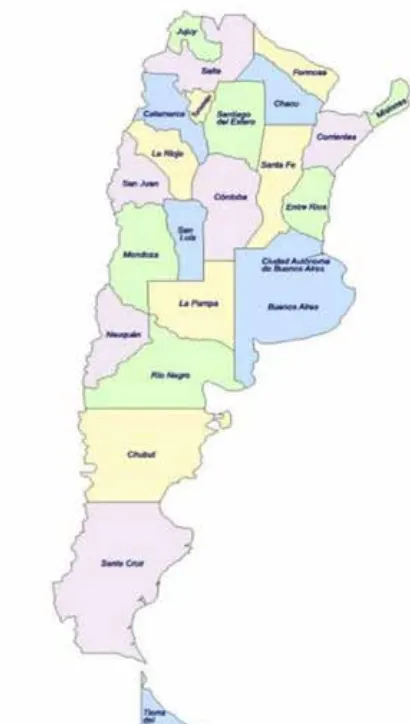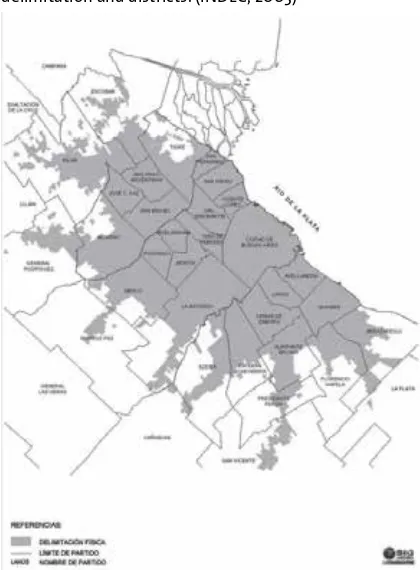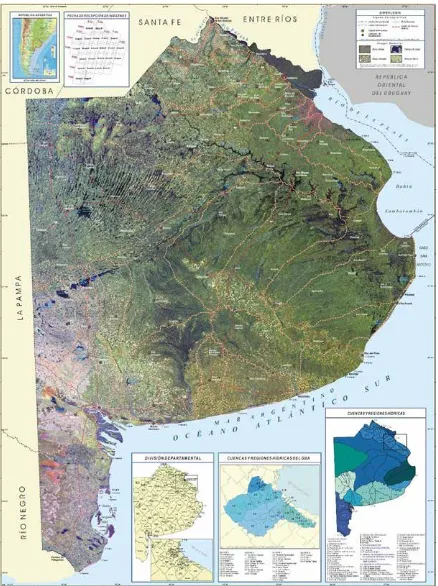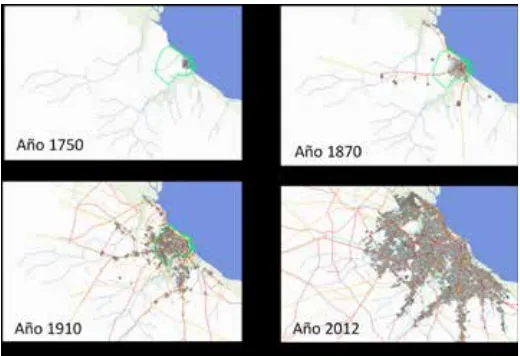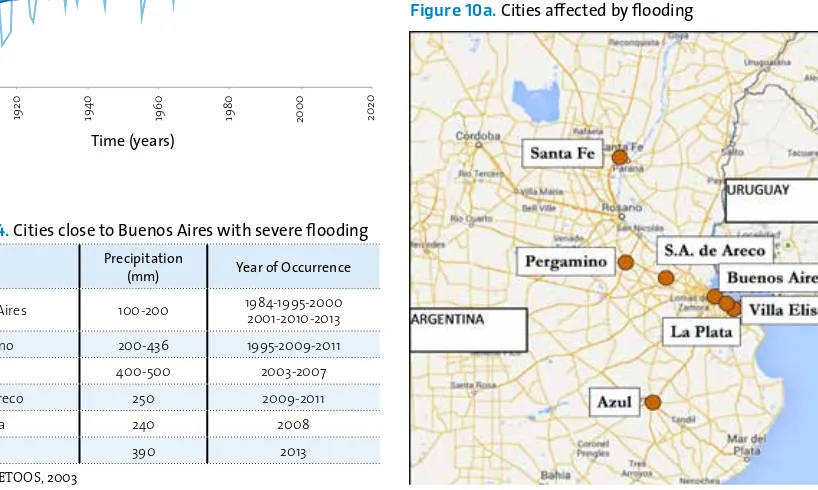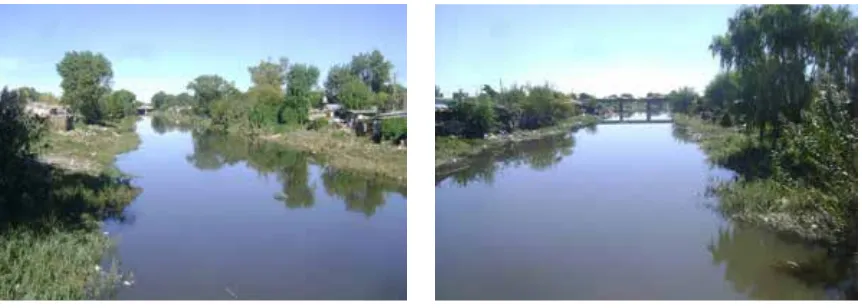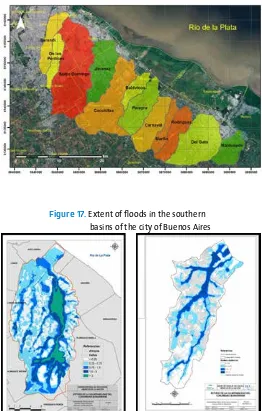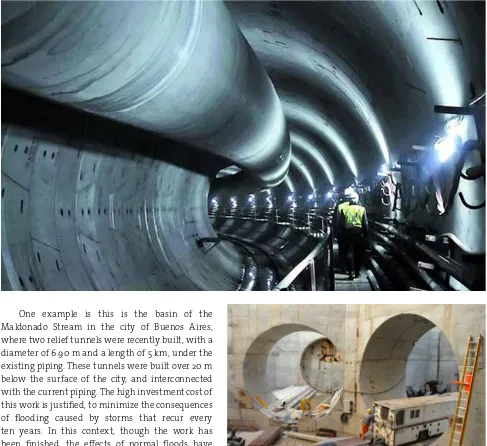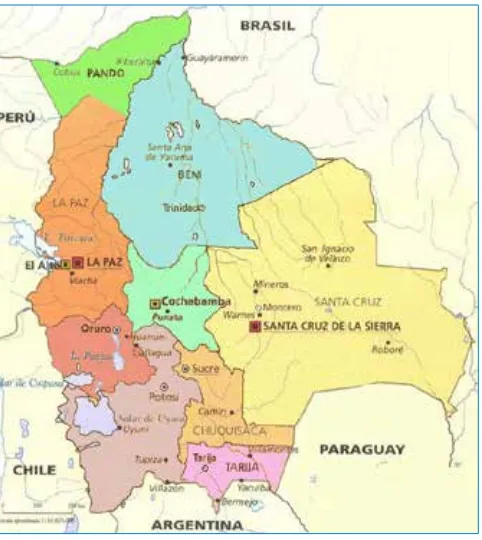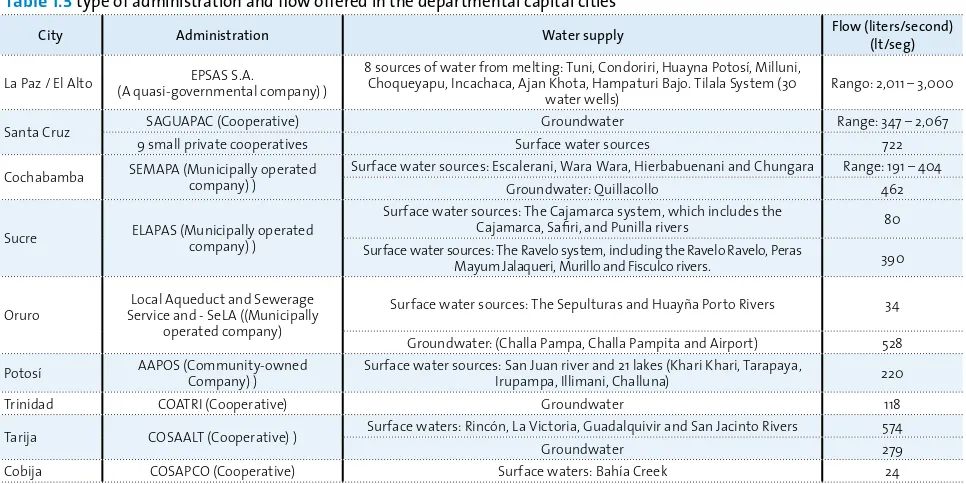A perspective from the Academies of Sciences
A perspective from the Academies of Sciences
Published by The Inter-American Network of Academies of Sciences (IANAS), Calle Cipreses s/n, Km 23.5 de la Carretera Federal México-Cuernavaca, 14400 Tlalpan, Distrito Federal, Mexico and the United Nations Educational, Scientific and Cultural Organization (UNESCO), 7, place de Fontenoy, 75352 Paris 07 SP, France, the UNESCO Office in Montevideo, Edificio Mercosur, Luis Pereira 1992, 2o piso, casilla de correo 859, 11200 Montevideo, Uruguay
© IANAS and UNESCO 2015 ISBN: 978-607-8379-12-5 Printed in Mexico
This publication is available in http://www.ianas.org/index.php/books and Open Access under the Attribution-ShareAlike 3.0 IGO (CC-BY-SA 3.0 IGO) license (http://creativecommons.org/licenses/by-sa/3.0/igo/). By using the content of this publication, the users accept to be bound by the terms of use of the UNESCO Open Access Repository (http://www.unesco.org/open-access/terms-use-ccbysa-en). For the printed book the present license applies exclusively to the text content of the publication. For the use of any material not clearly identified as belonging to UNESCO, prior permission shall be requested from: publication.copyright@unesco.org or UNESCO Publishing, 7, place de Fontenoy, 75352 Paris 07 SP France.
The designations employed and the presentation of material throughout this publication do not imply the expression of any opinion whatsoever on the part of UNESCO concerning the legal status of any country, territory, city or area or of its authorities, or concerning the delimitation of its frontiers or boundaries. The ideas and opinions expressed in this publication are those of the authors; they are not necessarily those of IANAS-IAP or UNESCO and do not commit the Organization.
This publication has been printed on ecological paper (FSC Certification): one part of the fibers is from recycled material and the other from forests exploited in a sustainable manner. Also this paper is chlorine free (ECF Certification) in order to contribute to the conservation of water resources.
IANAS is a regional network of Academies of Sciences created to support cooperation in order to
strengthen science and technology as tools for advancing research and development, prosperity
and equity in the Americas.
IANAS
Co-Chairs: Michael Clegg (United States) and Juan Asenjo (Chile). Executive Director: Adriana de la Cruz Molina
Editorial Coordination
Katherine Vammen and Adriana de la Cruz Molina
IANAS Water Program
Co-Chairs: Katherine Vammen (Nicaragua), Blanca Jiménez (Mexico) and Honorary Co-Chair: Jose Tundisi (Brazil)
Editorial Committee
Gabriel Roldán (Colombia), María Luisa Torregrosa (Mexico), Katherine Vammen (Nicaragua), Ernesto J. González (Venezuela), Claudia Campuzano (Colombia), Hugo Hidalgo (Costa Rica) and Adriana de la Cruz Molina (Mexico)
Proof Reading
Ma. Areli Montes Suárez and authors of the chapters
Translation
Suzanne D. Stephens (Argentina, Chile, Mexico, Canada, Honduras, Panama, Costa Rica, Dominican Republic, Peru and Toronto) and Alejandra Huete (Cuba and El Salvador)
Graphic Design
Víctor Daniel Moreno Alanís Francisco Ibraham Meza Blanco
Original Cover Design
Francisco Ibraham Meza BlancoGraphic Design Support
Osiris López Aguilar, Mariana Guerrero del Cueto, Tania Zaldivar Martínez, and Roberto Flores Angulo
A perspective from the Academies of Sciences
URBAN WATER
Argentina
National Academy of Exact, Physical and Natural Sciences of Argentina
www.ancefn.org.ar
Roberto L.O. Cignoli President
Brazil
Brazilian Academy of Sciences
www.abc.org.br
Jacob Palis, President
Bolivia
National Academy of Sciences of Bolivia
www.aciencias.org.bo
Gonzalo Taboada López, President
Canada
The Royal Society of Canada: The Academies of Arts, Humanities and Sciences of Canada
https://rsc-src.ca/en/
Colombian Academy of Exact, Physical and Natural Sciences
www.accefyn.org.co
Enrique Forero, President
Costa Rica
National Academy of Sciences of Costa Rica
www.anc.cr
Pedro León Azofeita, President
Cuba
Cuban Academy of Science
www.academiaciencias.cu
Ismael Clark Arxer, President
Dominican Republic
Academy of Sciences of the Dominican Republic
www.academiadecienciasrd.org
Milcíades Mejía, President
Ecuador
Academy of Sciences of Ecuador
http://www.academiadecienciasecuador.org
Carlos Alberto Soria, President
Guatemala
Academy of Medical, Physical and Natural Sciences of Guatemala
www.interacademies.net/Academies/ByRegion/ LatinAmericaCarribbean/Guatemala/
Enrique Acevedo, President
Honduras
National Academy of Sciences of Honduras
www.guspepper.net/academia.htm
Gustavo A. Pérez, President
Mexico
Mexican Academy of Sciences
www.amc.unam.mx
Jaime Urrutia, President
Nicaragua
Nicaraguan Academy of Sciences
www.cienciasdenicaragua.org
National Academy of Sciences of Peru
www.ancperu.org
Ronald Woodman Pollitt, President
United States of America
US National Academy of Scienceswww.nasonline.org
Ralph J. Cicerone, President
Uruguay
The National Academy of Sciences of the Oriental Republic of Uruguay
www.anciu.org.uy
Rodolfo Gambini, President
Venezuela
Academy of Physical, Mathematical and Natural Sciences of Venezuela
www.acfiman.org.ve
Argentina
Dr. Raúl A. LopardoNational Water Institute
Bolivia
Dr.Fernando UrquídiNational Academy of Sciences of Bolivia
Brazil
Dr. José Galizia Tundisi
International Institute of Ecology
Canada
Dra. Banu OrmeciCarleton University
Grenada
Dr. Martín ST. Clair FordeSt. George’s University, Grenada
Chile
Dr. James McPheeAdvanced Mining Technology Center University of Chile
Colombia
Dr. Gabriel RoldánColombian Academy of Exact, Physical and Natural Sciences
Costa
Rica
Dr. Hugo HidalgoUniversity of Costa Rica
Cuba
Dra. Daniela Mercedes Arellano Acosta
National Institute of Hygiene, Epidemiology and Microbiology, Havana, Cuba
Dominican Republic
Ing. Osiris de LeónComission of Natural Sciences and Environment of the Science Academy
El
Salvador
Dr. Julio Cesar Quiñones Basagoitia
Member of the Global Water Partnership
Guatemala
Ing. Manuel BastarrecheaAcademy of Medical, Physical and Natural Sciences of Guatemala
Honduras
Dr. Marco BlairNational Academy of Sciences of Honduras
Mexico
Dra. María Luisa Torregrosa
Latin American Faculty of Social Sciences
Nicaragua
Dra. Katherine VammenNicaraguan Research Center for Aquatic Resources National Autonomus of Nicaragua
Panama
Dr. José R. FábregaFaculties of Civil and Mechanical Engineering at the Technological University of Panama
Peru
Dra. Nicole BernexGeography Research Center Pontifical Catholic University of Peru
Uruguay
Dr. Daniel CondeSciences Faculty Universidad de la República
USA
Dr. Henry VauxUnivesity of California
Venezuela
Dr. Ernesto J. GonzálezArgentina
Raúl Antonio Lopardo
National Water Institute
Jorge Daniel Bacchiega
National Water Institute
Luis E. Higa
National Water Institute
Bolivia
Fernando Urquidi-Barrau
National Academy of Sciences of Bolivia
Brazil
José Galizia Tundisi
International Institute of Technology
Carlos Eduardo Morelli Tucci
Universidade Federal do Rio Grande do Sul
Fernando Rosado Spilki
Centro Universitário Feevale
Ivanildo Hespanhol
Universidade de São Paulo
José Almir Cirilo
Universidade Federal de Pernambuco
Marcos Cortesão Barnsley Scheuenstuhl
Brazilian Academy of Sciences
Natalia Andricioli Periotto
Centro de Ciências Biológicas e da Saúde
Canada
Banu Örmeci
Carleton University
Michael D’Andrea
Water Infrastructure Management Toronto
Chile
James McPhee
Advanced Mining Technology Center University of Chile
Jorge Gironás
School of Engineering Pontifical Catholic University of Chile
Bonifacio Fernández
School of Engineering Pontifical Catholic University of Chile
Pablo Pastén
Department of Hydraulic and Environmental Pontifical Catholic University of Chile
José Vargas
Chilean Hydraulic Engineering Society
Alejandra Vega
Pontifical Catholic University of Chile
Sebastián Vicuña
UC Global Change Center
Colombia
Gabriel Roldán
Colombian Academy of Exact Physical and Natural Sciences
Claudia Patricia Campuzano Ochoa
Antioquia Science and Technology Center
Luis Javier Montoya Jaramillo
National University of Colombia-Medellin
Carlos Daniel Ruiz Carrascal
School of Engineering of Antioquia
Andrés Torres
Javeriana Pontifical University-Bogota
Jaime Lara-Borrero
Sandra Lorena Galarza-Molina
Javeriana Pontifical University-Bogota
Juan Diego Giraldo Osorio
Javeriana Pontifical University-Bogota
Milton Duarte
Science and Engineering Research Group
Sandra Méndez-Fajardo
Javeriana Pontifical University-Bogota
Costa Rica
Hugo G. Hidalgo
University of Costa Rica
Ángel G. Muñoz
International Research Institute for Climate and Society at Columbia University
Carolina Herrero
Ph-C Ingenieros Consultores
Eric J. Alfaro
University of Costa Rica, School of Physics
Natalie Mora
University of Costa Rica, School of Physics
Víctor H. Chacón
Municipality of Perez Zeledon, C.N.E.
Darner A. Mora
National Waters Laboratory
Mary L. Moreno
International Center for Economic Policy for Sustainable Development at the National
University of Costa Rica
Cuba
Daniela de las Mercedes Arellano Acosta
Agency of Environment, Ministry of Science, Technology and Environment, Havana, Cuba
L.F. Molerio-León MSc.
GRANIK HOLDINGS Ltd (Dominican Republic)
Eduardo O. Planos Gutiérrez
Cuban Meteorology Institute
Dominican Republic
Osiris de León
Comission of Natural Sciences and Environment of the Science Academy
El
Salvador
Julio Cesar Quiñones Basagoitia
Member of the GWP
Grenada
Martin ST. Clair Forde
St. George’s University, Grenada
Brian P. Neff
St. George’s University, Grenada
Guatemala
Manuel Basterrechea
Academy of Medical
Physical and Natural Sciences of Guatemala
Carlos Roberto Cobos
Engineering Research Center
Juan Carlos Fuentes
National Electrification Institute
Norma Edith Gil Rodas de Castillo
Oceans and Aquiculture Studies Center CEMA University of San Carlos, Guatemala-USAC
Jeanette Herrera de Noack
Environmental Law Alliance Worldwide
Ana Beatriz Suárez
Honduras
Marco Antonio Blair Chávez
National Academy of Sciences of Honduras.
Manuel Figueroa
National Academy of Sciences of Honduras.
Mexico
María Luisa Torregrosa y Armentia
Researcher in the Latin American Faculty of Social Sciences-FLACSO
Blanca Jiménez-Cisneros
Water Sciences Division and Secretary of UNESCO
Jacinta Palerm
Graduate Level, Mexico-COLPOS
Ricardo Sandoval Minero
Sextante Consulting Services, S.C.
Karina Kloster
Autonomous University of Mexico City
Polioptro F. Martínez Austria
University of the Americas, Puebla
Jordi Vera Cartas
Fondo Golfo de Mexico A.C
Ismael Aguilar Barajas
Monterrey Institute of Technology
Nicaragua
Katherine Vammen
Nicaraguan Research Center for Aquatic Resources (CIRA/UNAN)
Yelba Flores Meza
Nicaraguan Research Center for Aquatic Resources (CIRA/UNAN)
Selvia Flores Sánchez
Nicaraguan Research Center for Aquatic Resources (CIRA/UNAN)
Iris Hurtado García
Nicaraguan Research Center for Aquatic Resources (CIRA/UNAN)
Mario Jiménez García
Nicaraguan Research Center for Aquatic Resources (CIRA/UNAN)
Francisco J. Picado Pavón
Nicaraguan Research Center for Aquatic Resources (CIRA/UNAN)
Gustavo Sequeira Peña
Nicaraguan Research Center for Aquatic Resources (CIRA/UNAN)
Panama
José Rogelio Fábrega Duque Technological University of Panama
Miroslava Morán Montaño
Agua del Trópico Húmedo para América Latina y el Caribe (CATHALAC)
Elsa Lilibeth Flores Hernández Technological University of Panama
Icela Ibeth Márquez Solano de Rojas Technological University of Panama Fundación Universitaria Iberoamericana
Argentina Ying B
Technological University of Panama
Casilda Saavedra
Technological University of Panama
Berta Alicia Olmedo Vernaza Gerencia de Hidrometeorología de ETESA
Pilar López Palacios
Peru
Nicole Bernex Weiss
Geography Research Center Pontifical Catholic University of Peru
Julio Kuroiwa Zevallos National Engineering University
Victor Carlotto Caillaux
San Antonio National University of Cusco
César Cabezas Sánchez National Health Institute of Peru
Ruth Shady Solis
National University of San Marcos
Fernando Roca
Pontifical Catholic University of Peru
Mathieu Durand University of Maine, France
Eduardo Ismodes Cascón Pontifical Catholic University of Peru
United States of America
Henry J. Vaux University of California
Uruguay
Daniel Conde Scalone School of Sciences University of the Republic
Adriana Piperno de Santiago School of Architecture University of the Republic
Federico Quintans Sives School of Sciences University of the Republic
Venezuela
Ernesto José González School of Sciences Central University of Venezuela
María Leny Matos HIDROVEN Plankton Laboratory
Eduardo Buroz
Andrés Bello Catholic University
José Ochoa-Iturbe School of Engineering Andrés Bello Catholic University
Antonio Machado-Allison
Academy of Physical, Mathematical and Natural Sciences of Venezuela
Róger Martínez Simón Bolívar University
Ramón Montero
The wealth of information presented in this book is thanks to the 120 authors (all listed in page 603 ) who participated in this collection of information on water resources in their respective countries. They use this information to analyze the urban water context and provide suggestions for improving water management along with solutions to problems related to urban water quality and quantity. The authors contributed their vast knowledge and expertise on a voluntary basis in order to advance our understanding of the present status of water resources in the major urban areas of each of their countries. The goal was to provide a collective synthesis describing the principal urban problems and management strategies spanning the wide geographical and economic diversity of the Americas. It is important to acknowledge the coordination work of the IANAS focal points who served as representatives of all 20 countries and who organized groups of specialists in different water topics as a key factor in assuring the high quality of content of each country chapter. This rich collaborative effort is the foundation for the comprehensive coverage presented in every chapter.
The Global Network of Science Academies (IAP) has provided generous support and inspiration for this book and for which we express our sincere gratitude. We are also grateful for the institutional support and encouragement from the United Nations Educational Scientific and Cultural Organization (UNESCO) and especially to the Director of Division of Water Sciences of the Secretary of the International Hydrological Program (IHP). The IHP has been a strong sponsor of the publication of this book which is closely aligned to one of their present priorities, “Water and Human Settlements of the Future” as described above in words from the IHP Director, Dr. Blanca Jimenez. We appreciate and acknowledge the support of UNESCO and IHP in advancing the original idea for this book and for their essential funding and contribution to the project.
The seven members of the editorial committee spent many hours in the coordination of the content of the chapters, in editing each chapter and in assisting with reviews and revisions and finally with proof reading of the English translation. For this we thank Gabriel Roldan (Colombia), Katherine Vammen
(Nicaragua), Claudia Campuzano (Colombia), Ernesto González (Venezuela), Hugo Hidalgo (Costa Rica), Maria Luisa Torregrosa (México)and Adriana De la Cruz Molina (Mexico). Henry Vaux (USA) supported in many ways and especially in revisions for some chapters to assure the correct professional English. Their time and efforts are very much appreciated.
We acknowledge the support and encouragement of the IANAS Co-Chairs, Michael Clegg and Juan Asenjo.
We are especially grateful to the co-chairs of the IANAS Water Program, Prof. José Tundisi of Brazil and Dr. Blanca Jiménez Cisneros of Mexico. Their special knowledge, acquired in two countries with mega urban areas, was the stimulus for the original idea that brought about the elaboration of this book. Their confidence in the focal point representatives of the IANAS water program was an important incentive to bring the book to reality.
We highly appreciate the coordination and richness of ideas for content, design and organization of the book from the Executive Director of IANAS, Adriana de la Cruz Molina who spent many 24 hour working sessions to make this publication possible.
The team of translators was essential to bring the content of the chapters into English in order to secure a wider international public for the book. We thank Suzanne D. Stephens and Alejandra Huete for their energy in bringing this highly technical Spanish into an English text.
The many hours and creative energy put into the cover and graphic design of the book by Víctor Daniel Moreno Alanís who was assisted by Francisco Ibraham Meza Blanco and the team of young graphic designers is highly appreciated. Special thanks to Veronica Barroso for her support in all phases of the publication of the book.
We would like to acknowledge the special support of the Global Water Partnership (GWP) of Central America for its contribution with the chapter of El Salvador and their support for the chapter of Honduras.
Katherine Vammen (Nicaragua)
Preface
Michael Clegg and Juan Asenjo, IANAS Co-Chairs
Urban Waters in the Americas
Blanca Jiménez-Cisneros, UNESCO International Hydrological Programme
Water in Urban Regions
José Galizia Tundisi, International Institute of Ecology São Carlos, Brazil
A Quick Look
Katherine Vammen, Co-Chair of the IANAS Water Program
Urban Water on the American Continent: the Case of
Argentina
Raúl Antonio Lopardo, Jorge Daniel Bacchiega and Luis E. HigaCompendium of the Water Resources in the Capital Cities of the Departments of
Bolivia
Fernando Urquidi-BarrauUrban Waters in
Brazil
José Galizia Tundisi, Carlos Eduardo Morelli Tucci, Fernando Rosado Spilki, Ivanildo Hespanhol, José Almir Cirilo, Marcos Cortesão Barnsley Scheuenstuhl and Natalia Andricioli Periotto
An Overview of Water Supply, Use and Treatment in
Canada
Banu ÖrmeciUrban Water Management: City of
Toronto
a Case Study
Michael D’Andrea
Water Security in
Chile
’s Cities: Advances and Pending Challenges
James McPhee, Jorge Gironás, Bonifacio Fernández, Pablo Pastén, José Vargas, Alejandra Vega and Sebastián Vicuña
Urban Water in
Colombia
Coordinators: Claudia P. Campuzano Ochoa and Gabriel Roldán. Authors. Claudia P. Campuzano Ochoa, Gabriel Roldán, Andrés E. Torres Abello, Jaime A. Lara Borrero, Sandra Galarza Molina, Juan Diego Giraldo Osorio, Milton Duarte, Sandra Méndez Fajardo, Luis Javier Montoya Jaramillo and Carlos Daniel Ruiz
Urban Waters in
Costa Rica
Hugo G. Hidalgo León, Carolina Herrero Madriz, Eric J. Alfaro Martínez, Ángel G. Muñoz, Natalie P. Mora Sandí, Darner A. Mora Alvarado and Víctor H. Chacón Salazar
Singularities of Island Aquifer Management in the Humid Tropics:
the urban water cycle in Havana,
Cuba
Coordinator: Daniela de las Mercedes Arellano Acosta. Authors: L.F. Molerio-León, Ma. I. González González and E.O. Planos Gutiérrez
15
16
19
21
26
52
84
112
128
146
168
202
Urban Waters in the
Dominican Republic
Rafael Osiris de LeónThe Perspective of Urban Waters in
El Salvador
Julio César Quiñonez BasagoitiaImpact of Development on Water Supply and Treatment in
Grenada
Martin S. Forde and Brian NeffUrban Water in
Guatemala
Claudia Velásquez, Norma de Castillo, Jeanette de Noack, Ana Beatriz Suárez, Carlos Cobos, Juan Carlos Fuentes and Manuel Basterrechea
Urban Water Management in
Honduras
: the case of Tegucigalpa
Marco Antonio Blair Chávez and Manuel Figueroa
Urban Water in
Mexico
Coordinator: María Luisa Torregrosa. Contributing Authors: Ismael Aguilar Barajas, Blanca Jiménez Cisneros, Karina Kloster, Polioptro Martínez, Jacinta Palerm, Ricardo Sandoval and Jordi Vera
Urban Water in
Nicaragua
Katherine Vammen, Selvia Flores, Francisco Picado, Iris Hurtado, Mario Jiménez, Gustavo Sequeira and Yelba Flores
Urban Waters.
Panama
José R. Fábrega D., Miroslava Morán M., Elsa L. Flores H., Icela I. Márquez de Rojas, Argentina Ying, Casilda Saavedra, Berta Olmedo and Pilar López
Urban Water Supply in
Peru
Nicole Bernex Weiss, Víctor Carlotto Caillaux, César Cabezas Sánchez, Ruth Shady Solís, Fernando Roca Alcázar, Mathieu Durand, Eduardo Ismodes Cascón and Julio Kuroiwa Zevallos
An Overview of Urban Water Management and Ploblems in the
United States of America
Henry Vaux, Jr.Urban Waters in
Uruguay
: Progresses and Challenges to Integrated Management
Coordination and editing: Adriana Piperno, Federico Quintans and Daniel Conde. Authors: Álvaro Capandeguy, Adriana Piperno, Federico Quintans, Pablo Sierra, Julieta Alonso, Christian Chreties, Alejandra Cuadrado, Andrea Gamarra, Pablo Guido, Juan Pablo Martínez, Néstor Mazzeo, María Mena, Nicolás Rezzano, Gabriela Sanguinet, Javier Taks, Guillermo Goyenola, Elizabeth González, Julieta López, Amancay Matos, Osvaldo Sabaño, Carlos Santos, Matilde Saravia, Luis Silveira, Rafael Arocena and Luis Aubriot
Urban Water in
Venezuela
Ernesto José González, María Leny Matos, Eduardo Buroz, José Ochoa-Iturbe, Antonio Machado-Allison, Róger Martínez and Ramón Montero
Biographies
248
268
308
332
350
382
414
448
474
504
524
556
Water is literally the stuff of life. It is absolutely essential for human health, for food production and for sanitation as well as for a host of other uses. A clear un-derstanding of present and future sources of water and of strategies for the ef-fective management of water resources is in the interest of every country. The challenge is urgent because human population demands, as well as climate change, make once secure sources uncertain. Moreover, water projects are of-ten large and expensive and take many years to complete, so future planning is crucial. Accordingly this volume aims to provide a science-based assessment of key water resource issues on a country-by-country basis for 20 countries of the Americas. The goal of IANAS is for this volume to serve as a valuable reference for policy makers, government officials and planners who will have to meet the challenges associated with our water future.
IANAS is the Inter American Network of Academies of Science (www.ianas. org). IANAS includes all the science academies of the Americas and it has access to the best scientific minds of our region. The goal of IANAS is to bring evidence based science to policy makers and to build scientific capacities in our hemi-sphere. IANAS achieves this goal by advancing investments in human resources for science and by focusing on key resource challenges. This volume is the sec-ond in a series on water, published in both Spanish and English, and intended to reach a wide policy audience. The first volume offered a broad assessment of the status of water resources in the Americas. This second volume addresses the fun-damental problem of urban water challenges. The Hemisphere of the Americas is among the most urbanized of regions on the globe and urban water needs are pressing. IANAS intends that this volume make a valuable contribution to a key challenge facing all of our countries.
Michael Clegg
Co-Chair IANAS, USA
Juan Asenjo
Co-Chair IANAS, Chile
The UNESCO International Hydrological Programme (IHP) started in 1975 as a continuation of the International Hydrological Decade (1965-1975). IHP is implemented through phases to adapt its activities to the world’s changing needs for the sustainable management of water. The program and its activities are defined through an in-depth consultation coordinated by the IHP Secretariat and the IHP Regional Hydrologists among 169 IHP National Committees, the category 1 UNESCO–IHE Center for Water and Education, the 28 regional and international UNESCO category 2 Water Centers, the 35 UNESCO Water Chairs and other relevant IHP partners and UN water related agencies.
In 2014, the IHP-VIII entered in its 8th Phase, which is dedicated to addressing the global, regional and local challenges to achieve Water Security. Among the six themes of IHP-VIII, the fourth is “Water for Human Settlements of the Future”, covering among other issues Urban Water.
Today, 750 million people lack access to safe water and many millions more have access only to a deficient service. At the same time, urbanization is growing rapidly. In the next 40 years, cities are expected to receive 800,000 additional inhabitants each week. At the global level, since 2011 for the first time in human history the human population lives in majority in cities. This and the absolute or partial lack of services for people already living in cities combined with population and economic growth have been and will continue to be the factors that demand a higher degree of and improved management of urban water. Also, the aging of urban hydraulic infrastructure is evident in many cities and will require significant investments for its renovation. Worldwide rapid urbanization demands new ways to conceive and operate public services, including those for water. New approaches are required to optimize the joint management of water, land use and energy, as well as to decrease the water footprint of cities and to control the transportation of contaminants into water and the transfer of pollutants among water, soil and the urban air. Among the regions with an important urbanization rate, The Americas, and notably Latin America, emerges. This latter region has the highest global rate of urban inhabitants with more than 72% of its population living in cities. No wonder that urban water management in the region is an issue, sometimes well solved, sometimes less so.
Urban Waters
in the Americas
Blanca Jiménez Cisneros
This book describes the situation of urban water management in 20 countries: all North and South American ones, and a significant number from Central America and the Caribbean region. To produce it a unique network of multidisciplinary scientists was created which in total 120 involved authors. The book is unique not only for this reason, but also because it covers, for the first time, in an integrated but flexible framework aspects never looked at before in urban water management on the American continent. Among those are water quality, water reuse, urban aquifers, rainwater management, urban floods, human and environmental health issues, and, of course, climate change. Through this multi-directional orientation, the book reveals that the challenges for urban water security extend to cities in all countries. Alongside the continuum of economic considerations, inequity of access to services are a concern, investments to renovate the urban water infrastructure need be planned, the problems of urban floods and poor water quality keep growing, and there is the urgent need to create cities resilient to climate change.
In conjunction with IHP’s approach, this book promotes bridging of science and policy by starting a dialog between science and policy makers. The book is a useful tool provided by scientists, inter alia for policy-makers because it was produced using an interdisciplinary approach, by combining the knowledge of scientists with the experience of water utility professionals and by applying it to solve practical problems relevant to society. A particularly noteworthy aspect of this book is the importance given to the role of outreach and creating a knowledgeable, participating public, is transparently informed about problems and involved in solutions. This underlines the requirement for, on one hand, effective communication skills among the specialized water community to convey scientific aspects to the non-scientific community. On the other hand, it highlights the need to provide reliable information for societies on public water problems and create accountable governance systems that engage with the public on the planning and implementation of projects.
Urbanization is a worldwide phenomenon. Most of the human population currently lives in urban regions, with populations ranging from 10.000 to 50.000 inhabitants, to millions of people in metropolitan cities.
The health and quality of life of these urban inhabitants depends on a series of factors and natural phenomena, such as climate, geological features, hydrological cycles, plant cover and biodiversity.
Intensive land use caused by the expansion of the urban area impacts human health and reduces green areas to a few isolated spots.
A city’s water resources are a key component in all the complex environmental conditions sustaining the urban population. Water availability, quality and security are all interlinked in urban regions due to the following factors: in many Latin American cities, good-quality drinking water does not reach all communities, especially in periurban areas; pollution and contamination, resulting from intensive land use and the lack of wastewater treatment and eutrophication due to nonpoint and point sources of nutrients. Water security is related to both water availability and pollution.
How then does one transform an urban region or city into a livable environment? First of all, the complexity of a city or large urban region must be understood. This is a task for future generation of scientists, and researchers, who will apply the science of complex systems to urban regions.1
Second, cities are dependent on resources far away from the urban area: water, food, fibers and timber are usually brought in due to the disruption of ecosystem services in the urban agglomerate.
Third, the network of roads, building and infrastructure disconnects people from nature.
It is essential to restore urban ecosystems. Green cities must build up, protect and promote natural parks, riparian forests and wetlands, clean rivers and lakes in order to provide sites for education and water resource conservation, restore urban biodiversity and reconnect people with nature.2
These actions will guarantee groundwater recharges and the availability of drinking water, and improve the humidity in the air due to the evapotranspiration of vegetation in natural parks and riparian forests.
Restoration of nature in the cities will promote healthy, attractive urban environments, improve the quality of life and provide better opportunities for employment and education. The water cycle in this context is of extreme ecological, economic, and social importance.
1. Reid W. et al 2010. Earth System Science for Global sustainability: grand challenges. Science vol. 330, pp. 916-917. 2. Tundisi J. G. 2005. Green cities. Letter to the Editor. Science. Brazilian Academy of Sciences, Leopoldina Nationale Akademie, Germany. 2014. Water in Urban Regions. 29 pp.
Water in Urban Regions
José Galizia Tundisi
Can the problems of urban water supply and sanitation be solved with better management?
Can access to safe drinking water be improved?
Can the challenge of improving sanitation and wastewater management be met?
Can water related health problems and water-borne disease be better addressed in urban areas?
What are the water related challenges in adapting to climate change for urban areas and how can they be met?
What are good models and concepts for helping to improve water management in urban areas?
A Quick Look At
Urban Water Challenges in the Americas
A Perspective from the Academies
These questions and others are addressed in the present volume which is focused on the urban water problems of the Americas. Urban water problems are especially important since more than 60% of the world population lives in cities and this number is increasing every year. Moreover, according to United Nations statistics the Americas are among the most urbanized regions of the world (> 80%). Urbanization goes hand in hand with intensification in the use of water resources for human needs; in turn, hydrological systems play a role in the development and growth of cities not only as a source of drinking water but also for the deposition of wastes. Urban Water Challenges in the Americas describes and analyzes the problems of water in urban centers in 20 countries of the Americas: spanning from South America, Central America, Mexico and the Caribbean to the United States and Canada. This unique examination of the countries of the Americas, each with different water resources characteristics, diverse levels of economic and social development, varying problems related to water quality and quantity and different experiences with water management, is a contribution from the Interamerican Network of Academies of Science (IANAS). The goal of the volume is to aid in the search for solutions to the challenges of properly managing water resources in urban areas as described in the 20 chapters of this book. Evidence from both developed and developing countries shows that to be effective the management of water resources must extend beyond the city to include the surrounding watersheds from which the water comes.
This book is organized into country chapters but each one emphasizes the
following topics:
• Water resources in urban areas and the impacts on water from urbanization. • The adequacy and accessibility of water supply services in urban areas. • The adequacy of wastewater management in urban areas.
• The importance of appropriate urban water services for community health. • The potential impacts of climate change on water resources and water services in
urban areas.
Katherine Vammen
Special themes from many of the countries include:
• Urban Systems and Water: Brazil.• Conservation and Water Reuse as Management Tools: Brazil.
• Urban Impact due to Rise of Groundwater: Argentina.
• Governance and Sanitation Sector Management: Chile.
• Sustainable Rainwater Management in Cities: Chile and Grenada.
• Aspects of Island Aquifer Management in Wet Tropical Zones: Cuba.
• Special problems of water supply on islands: Grenada and Cuba.
• Historical Development of Water Supply and Urbanization: Uruguay.
• Rainwater Management and Planning in cities: Uruguay.
• Addressing the problems of water scarcity: Managing Water Demand: USA.
• Biological Water Quality in Water Treatment Plants: Panama.
• Reutilization of Waste Waters: Colombia.
• Analysis of Vulnerability to Climate Change of Principle Nicaraguan Cities • Population Growth and the Structuring of Cities: Mexico.
• Climate Change and Urban Disaster Risk: Peru.
• Extreme Climate Events in the City of Guatemala.
• Hydro-Climatic Projections for Central America: Costa Rica.
Case study on urban water management
An especially instructive Case Study on best practices associated with Urban Water Management in Toronto, Canada is also included.
This unique collection of experiences with urban waters in the Americas rests on a wide geographical representation that includes differences in water resource availability and levels of economic development. The analyses herein offer the opportunity to draw lessons stemming from the commonalities and differences among the countries of the Americas. Also, it highlights the fact that a significant diversity of water management schemes will be required to manage water effectively.
Urbanization and water resources
In general urbanization requires more water per unit area while producing wastes, including wastewaters and solid wastes that tend to degrade water quality and that must be managed. Urbanization also tends to degrade local watersheds and their surrounding areas through deforestation and increases in impervious areas.
Urbanization and impacts on water resources in urban zones
Urbanization has not been accompanied by adequate planning and foresight in most countries. Environmental impacts are accounted for in advance only infrequently with resulting adverse effects on the environment including water resources. Examples include: 1) Inappropriate land use and deforestation in the watershed and surrounding areas of urban centers leading to erosion which then brings heavy sedimentation into the cities and contaminates sources of water; 2) Uncontrolled discharges of domestic and industrial wastewaters into surface waterbodies and coastal areas; 3) Lacking hygienic habits of the population and inappropriate management of solid wastes deposited into sources of water or city drainage systems; 4) Contamination of ground and surface water from different sources: mining, hydrocarbon spills from industry and contamination from storage of fuel tanks at service stations as well as pesticide runoff from agricultural activities from the surrounding watershed; 5) Impairment of recharge to urban aquifers due to reduction of green cover (forests, wetlands, riparian forests) and impermeable infrastructure associated with urbanization and more.
Water supply services and sanitation
In the last decades the access to potable water and treatment of waste water in cities of the Americas has improved. The coverage of water supply systems in the majority of cities has reached levels that fulfill the Millennium Development Goals of the United Nations for improved drinking water sources and it is important to highlight that Latin America and the Caribbean have the highest drinking water coverage of the developing world. However, as observed in the analysis provided in each country´s chapter, there are still serious problems with the coverage for improved sanitation in cities varying from 57 to 100% according to the WHO and UNICEF report on Drinking Water and Sanitation (2014). An exception is Chile where there has been rapid improvement in sanitation coverage in the last decade such that all collected wastewaters are treated. A combination of factors has made this possible, including Chile´s economic stability, institutional restructuring and significant investments in the context of utility privatization. Despite this success, important challenges remain, such as access to sanitation service in peri-urban unincorporated communities.
undertake new programs of renewal and innovation. The case study of Toronto presents some management steps being undertaken to finance and improve distribution systems.
The lack of adequate monitoring of water quality for contaminants, together with new emerging sources of contamination, is identified as a major problem in both developed and developing countries. It is also important that the microbiological safety of water in most countries is not secure because the detection of viral and protozoan pathogens is not included in standard water monitoring protocols.
It is important to mention that some improved sanitation systems still cause contamination of water sources originating from the same system. Many countries report examples of septic tanks from urban areas and new urban developments that contaminate groundwater sources used for drinking water. Also the majority of developing countries reported massive problems due to the discharge of waste waters into rivers and the ocean without treatment. It has also been reported that 15% of waste waters do not receive even basic primary treatment. Some Central American countries report many cases where Oxidation ponds treating domestic waste waters discharge into surface waterbodies which consequently undergo strong eutrophication and loss of water quality for human consumption and irrigation.
The cities of Latin America and the Caribbean islands are affected by the informal growth of peri-urban areas (usually due to migration from rural areas or consequences of climate change crisis in rural areas) which have little or no water coverage or sanitation. These areas have the highest rate of water-borne disease and a significant incidence of contamination of water sources. These peri-urban areas will require special attention if healthful drinking water supplies and adequate sanitation services are to be provided to the local residents.
For the United States and Canada, urban water issues are focused on the need for improving maintenance and renewal of systems. The deterioration of quality in source waters and of course the water scarcity crisis require innovative financial, technological and “demand management strategies” to reduce loss of the resource and “maintain levels of reliability”.
Urban water and health
The increase in coverage of water and sanitation in urban zones has had a positive influence in the reduction of waterborne diseases (bacterial and vector born) in developing countries of the Americas. Further improvements in the continuity of services, and the renewal and better maintenance of distribution systems would further reduce the probability of waterborne diseases. Where water supply and sanitation reaches only part of the population or is completely absent, the environment is favorable to the development and spread of waterborne diseases. Peri-urban and informal settlements are particularly at risk.
Climate change and impact on water resources in cities
and changes in soil use from deforestation which creates increases in erosion and brings heavier sediment loads into cities. The geographical characteristics of Central America make it especially vulnerable to climate change and higher evapotranspiration rates have been observed due to the gradual increase in temperatures. There have been reports from many countries in North, Central and South America of droughts that have caused severe crises in the provision of potable water forcing authorities to ration irrigation and give priority to human consumption. Special examples of drought management and organizations of the water supply in cities are mentioned for the USA in California and northeastern Brazil. Also most countries have documented the occurrence of extreme events of intensive rains causing flooding in urban areas, owing to inadequate drainage systems. Examples of better planning for the reform of urban drainage systems are presented for Uruguay and concrete management examples are given in the Case Study of Toronto, Canada.
Water reuse
Climate change and especially drought situations have made the reuse of waste water more important than ever for cities. New technologies to prepare waste water for reuse are described and these can also contribute to reduction in the deposition of raw sewage into receptor bodies of water in cities. The use of domestic sewage, liquid residues from industrial effluents, agricultural runoff and brackish waters could prove to be a viable alternative source of water for certain uses. The storage and reuse of rain water has been implemented in some countries. It was emphasized that the monitoring of the quality of water for reuse is fundamental in order to guarantee the appropriate quality.
Effectiveness of water institutions and legal aspects
In most countries, progress has been made with the establishment of Water Authorities and specific legislation governing water resources and water management. For some countries the effectiveness of these institutions is not yet adequate and the existing laws are not being enforced in an effective way to promote good water management in urban areas.
Argentina
Urban Water on the
American Continent:
the case of Argentina
Summary
This chapter characterizes the availability and distribution of water resources, with an emphasis on their uneven spatial distribution. It analyzes population growth in recent years, noting that over 90% of the total live in urban areas. It describes the various catchment for water supply and studies the current level of coverage in the country’s main cities. Although there are high percentages of drinking water coverage, over 90% in the principal cities, the level of sanitation is uneven, with indices varying between 35% and 80%. The chapter also mentions the organization of the provision of drinking water service, where there is a federal regime that implies the existence of specific norms and regulations for each province, which multiplies the number of providers in the country, bringing the total to 1,830.
The chapter also undertakes an analysis of the existing situation in the urban conglomerate of Greater Buenos Aires, home to over 12 million persons, with high levels of coverage. It focuses on the treatment and the level of reuse of wastewater. Lastly, it specifically analyzes two significant impacts linked to water resource management and rising water tables, and the impact of excess precipitation on urban centers.
Raúl Antonio Lopardo
Jorge Daniel Bacchiega
1. Introduction
Water resources in Argentina are unevenly distributed, with 2/3 of its territory consisting of arid and semiarid regions, and only 1/3 with abundant mainly surface water bodies, accounting for 84% of the country’s available water. Surface water resources are estimated to have an average flow of approximately 26,000 m3/s (Pochat, 2005). Given Argentina’s population of 40,117,096 inhabitants recorded in the National Population, Household and Housing Census 2010 (INDEC, 2012), this means an annual renewable water supply ratio of approximately 20,500 m3/s per inhabitant .
Though this is considerably above the 1,700 m3/ inhabitant/year that has been adopted as the water stress or “Falkenmark Indicator” (White, 2012), it does
not accurately reflect the real supply of surface wa-ter in Argentina. Despite the significant global wawa-ter supply, there are some negative balances between potential demands and water availability in certain parts of the country. Moreover, one should recall that there are very diverse population densities in the various hydrographic basins (INDEC, 2012), and consequently certain provinces, including Tucumán and Córdoba, have an annual water availability per inhabitant below the hydric stress limit.
Figure 1 is a map of Argentina divided into the 23 provinces and the city of Buenos Aires, which is not a province but rather an autonomous city. It also shows the location of the aforementioned provinces in the center of the country.
Figure 2 is a map of the principal water basins and hydrographic groups. Both maps are taken from the 2010 Atlas, Surface water basins and regions of Argentina, by the National Water Institute, Under-Secretariat of Water Resources.
Wetlands occupy 24% of the area of the country, but are home to approximately 70% of the country’s total inhabitants, whereas arid zones account for 61% of the territory, yet only contain 6% of its inhabitants. This water/population ratio is exactly the opposite of the majority of Latin American countries.
Though groundwater resources are of crucial importance in the arid and semiarid regions of the country, there is insufficient information regarding these resources nationwide. Available information refers to local aquifers, particularly in the areas of Cuyo, the North East and the Pampas region (Aquastat, 2000). The recently-created National Federal Plan for Groundwater at the Under-Secretariat for Water Resources (SSRH, 2012) will undoubtedly contribute to creating the information required for the integrated management of this key resource. Argentina possesses a broad distribution of aquifers with diverse characteristics throughout its territory, which enables water to be supplied for human consumption, particularly in most of the towns in the interior of the country. However, most of the water consumed is for irrigating agricultural production.
The Plan stipulates that sustainable underwater management is crucial to preventing a decrease in stored volumes or a reduction in wetlands areas, maintaining the useful life of boreholes, ensuring the quantity and temperature of thermal exploitations and preventing modifications in the surface of the land, among other undesirable effects of non-sustainable use. This National Plan is currently undergoing its first phase of implementation, which involves creating a hydrogeological database, continuing studies on the Guaraní Aquifer System in Argentina, and various forms of participation in actions involving trans-border aquifers and inter-jurisdictional basins.
The uncontrolled increase in the use of surface and groundwater, in both the industrial and productive sphere, with discharges of untreated effluent and the haphazard development of extensive marginal population settlements, meant that by the early 21st century, water resources had significantly deteriorated as a result of inadequate exploitation and the dumping and infiltration of polluting substances. This resulted in problems in the development of aquatic life, the emergence or increase in water-borne diseases, the deterioration of conditions for various leisure activities and an increase in water purification costs.
2. Some Notes on Urban
Population
The population in Argentina’s major urban centers grew far more rapidly than the country’s total population. Figure 3 shows that in recent years, urban concentration has maintained a positive growth rate, with a marked decrease in the rural population.
According to information from the National Institute of Statistics and Censes, INDEC, (2011), Argentina’s population data can be summarized as follows:
• Total population: 40,117,096 inhabitants (49% male)
• Annual population growth rate: 1.036% • Birth rate: 18.6%
• Mortality rate: 7.6% • Life expectancy: 76.8 years.
Figure 3. Evolution of Argentina’s population
Population millions
Year
• Urban population in centers with over 2,000 inhabitants: 89.31% (48.27% male)
• Rural population in centers with fewer than 2,000 inhabitants: 3.40% (50.81% male)
• Scattered rural population: 7.28% (54.02% male)
The information from INDEC indicates that the total population estimated on July 1, 2014 was 42,669,500 inhabitants, 48.9% of whom were male, with an annual growth rate in the order of 1%.
According to the same source, Argentina’s ten largest urban centers were home to a total of 21,050,797 inhabitants; that is, 52.47% (over half) of the country’s total population.
As regards large urban agglomerations, there is debate surrounding the effective definition of “Greater Buenos Aires.” Consequently, in 2003, INDEC proposed that the urban conglomerate be considered to comprise the city of Buenos Aires in addition to 24 surrounding districts belonging to the province of Buenos Aires.
However, the name “Greater Buenos Aires Agglomeration” has been given to a combination of the city and 30 districts in the province of Buenos Aires, which, whether totally or partially, comprise the “population belt” composing the agglomeration (INDEC, 2003). If one considers only Greater Buenos Aires and Greater La Plata, the Greater Buenos Aires “agglomeration” represents 35.85% of the total Argentinian population.
Though there is a lack of accurate information on this issue, it is clear that demographic growth in cities with the highest number of inhabitants – particularly Greater Buenos Aires – has taken place in suburban zones, generally as a result of internal migration or immigration from neighboring countries that form settlements, some of which experience severe problems of drinking water, sewerage and the risk of excess water. Figures 4 and 5 show a satellite image and a plan of the districts in the Buenos Aires agglomeration.
3. Types of Water Supply
Sources
As a result of its extensive geographical distribution, seasonal and inter-annual stability and the high flexibility permitting its exploitation, groundwater
Figure 4. Buenos Aires agglomeration. Satellite Image
Figure 5. Buenos Aires agglomeration. Physical delimitation and districts. (INDEC, 2003)
Table 1. Extraction of water, by use and source, between 1993 and 1997
Use
Surface water Groundwater Total
106 m3 / year % of the total water used 106 m3 / year % of the total water used 106 m3 / year % of use in relation
to total extracted
Irrigation 18,000 75 6,000 25 24,000 71
Livestock 1,000 34 2,000 66 3,000 9
Municipal 3,500 78 1,000 22 4,500 13
Industry 1,500 60 1,000 40 2,500 7
Total 24,000 --- 10,000 --- 34,000 100
Source: Calcagno et al., 2000.
Table 1 estimates the various consumptive uses of water extracted in Argentina between 1993 and 1997 (Calcagno et al., 2000).
The national average for the contribution of groundwater to the total demand coverage, of ap-proximately 30%, does not reflect the importance of the role of these resources. Thus, in the irrigation sector, groundwater ensures multiannual regula-tion, which during periods of drought, such as the one that lasted from 1967 to 1972, offset the lack of surface resources.
The distribution and occurrence of the aquifer systems in Argentina’s mainland territory is conditioned by the geological structure and climatic and hydrographic factors. Four broad hydrogeological regions can be distinguished (INCYTH, 1991): inter-mountain valleys, the Pampa Chaco plain, the Missionary tableland and Patagonian tablelands.
According to the specific bibliography (World Bank, 2000), the essential characteristic of the inter-mountain valley region, which includes the Andes mountain range and pre-mountain range region, is its extensive clastic sedimentary deposits that constitute aquifer systems with high permeability at the foothills and medium to low permeability in the center of valleys and at a depth. This region mainly encompasses the north east and Cuyo region (provinces of Jujuy, Salta, Tucumán, Catamarca, La Rioja, San Juan, San Luis and Mendoza), with an arid and semi-arid climate. The working of the aquifer systems is closely linked to the hydrology of the rivers, whose runoffs constitute the main natural recharge of these systems. There are aquifers that discharge into endorheic basins, such as those of Puna, the Tucuman alluvial fan and the valleys of Catamarca and Tunuyán and aquifer systems that discharge
into the floodplain that tends to flow into the Atlantic Ocean, such as those in the valleys and alluvial fans of the Mendoza, Atuel, Diamante and San Juan rivers.
The La Pampa Chaco plain has aquifers in clastic sediments throughout the region. The predominant morphology is plains, ranging from undulating to depressed and high. One part is located in the coastal and Mesopotamian zone, which corresponds to the provinces of Formosa, Chaco, Corrientes, Santa Fe and Entre Ríos; the so-called central zone or Pampa Gringa comprising the provinces of Santiago del Estero, Córdoba and La Pampa, and the other contains the province of Buenos Aires and the Buenos Aires agglomeration. In a predominantly humid climate, aquifer systems, are mainly recharged by rainfall infiltration. The groundwater resources in the region are mainly derived from the extensive aquifer system called Puelches, which includes three overlapping, interlinked aquifers: Epipuelches or Pampean, Puelches and Hipopuelches or Paraná.
The Missionary Plateau Region includes the provinces of Misiones and part of that of Corrientes. The aquifers comprise low permeability basalts and the sandstones of the Misiones Formation. The latter belong to a mega-aquifer, known as the Guaraní Aquifer, with an area of 1,500,000 km², occupying part of Brazil, Paraguay, Uruguay and Argentina.
In particular, the province of Buenos Aires is characterized by belonging to a vast plain occupying approximately 270,000 km² and is home to over a third of the country’s population. The largest slopes are located in the Tandil and Ventana mountain ranges, which occupy around 10% of this area. Figure 6 shows a map of the province of Buenos Aires (INA, 2006).
The rest of the province mainly features very flat topography, with slopes in the order of one per thousand, just above sea level. This characteristic means that rain water has a limited ability to flow over the surface of the land, as a result of which most of this water returns to the atmosphere through evaporation and plant transpiration, while the remainder filters into the soil and recharges the aquifers. During the rainy season, the excess water feeds the aquifers, thus increasing the groundwater level. The water often rises to ground level, creating large surface lagoons characteristic of the heavy semi-permanent flooding that has affected this region on numerous occasions. The subsoil of the Province of Buenos Aires therefore contains an enormous amount of groundwater levels that can easily be exploited (Bonorino et al., 2009).
However, nowadays, the country’s major urban centers are recharged by surface water resources. In particular, the large centers on the Paraná and La Plata rivers supply their riverside population through river water intakes with large-scale purification systems.
4. Drinking Water and Basic
Sanitation in Argentina’s Cities
80% of Argentina’s population have a home connection to a drinking water network, and 53% have a home connection to a sewerage network, rising to 90% when improved sanitation systems are also included.
The 32 urban agglomerations, comprising over 70% of the national urban population, have an average drinking water coverage by network of 96% of inhabitants and sewerage coverage by network of 68% of inhabitants. The Buenos Aires agglomeration is below this average (83% and 58%, respectively).
In Argentina, the national average of water production per inhabitant served is estimated at 380 liters a day, with figures varying widely between the various provinces, from a maximum of 654 liters a day per inhabitant in the Province of San Juan to a minimum of 168 liters a day in the Province of La Pampa. Non-revenue water is one of the main efficiency problems encountered in drinking water services. It is calculated that losses in the network, sub-invoicing through clandestine connections and failure to update users’ registries account for between 35% and 45% of the water produced, meaning that the average supply in Argentina is approximately 250 liters a day per inhabitant. This high level of consumption, compared to that recorded in numerous countries worldwide and in Latin America, can partly be explained by the low level of micro-measurement of consumption that prevails in Argentina’s systems, particularly in the majority of services in large cities, where users are invoiced on the basis of “open faucet” tariff regimes. In this regard, based on international antecedents, the average consumption recorded by systems that operate using micro-measurement is in the order of 80 liters a day per inhabitant (PAHO, 1999).
Table 2. Urban drinking water coverage in Argentina.
Urban center Drinking Water % Sanitation %
Greater Buenos Aires 83 58
Córdoba 96 35
Rosario 99 61
Mendoza 96 80
La Plata 92 68
Source: INDEC-EPH IV Trimester 2006
complex controls, do not usually have a history of treating these effluents. Moreover, irregular settlements (known as “villas” here) do not all have adequate services for water supply and sanitation, which contributes to pollution. The emblematic case of the Matanza-Riachuelo basin suffers from several water and environmental problems: flooding of residential and industrial areas, drains in settlements without sanitation services, garbage collection and processing with techniques that fail to comply wiht hygiene, safety and health standards, and a certain informality in industrial activities. The National Government, the Government of the City of Buenos Aires, the Province of Buenos Aires and various municipalities of the province share jurisdiction over the basin. The creation of the Matanza-Riachuelo Basin Authority (ACUMAR) has significantly facilitated the coordination of the actions of various organisms, in an attempt to reach a consensus on a single joint strategy, without which it would be impossible to reverse the urban and environmental degradation.
Another environmental water problem affecting urban zones in Argentina is groundwater pollution. In most of the country, groundwater management has been ineffective, meaning that only partial quantitative information is available to assess the current state of aquifers and the water quality trends in each of them. The responsibility for groundwater management lies with the provincial governments, which do not generally have the financial and human support to manage a resource that is much less visible than surface water.
According to INDEC, in the last trimester of 2006 (EPH–IV Trimester 2006, INDEC), coverage in the 32 urban agglomerations, whose urban population is equivalent to 70% of the national total, had average
access to drinking water through a network of 96%, with sewerage coverage for 68% of its inhabitants.
Table 2 shows that the lowest coverage of drinking water service corresponds to Greater Buenos Aires (83%), since although the federal capital zone has almost total coverage, as mentioned before it includes suburban zones with a high population density and low income. Though Greater Buenos Aires has a lower figure for domestic sanitation service (58%), the lowest level is registered in the city of Córdoba (35%).
Sanitation supply in Argentina has historically been lower than drinking water coverage through a network. A comparison of the districts shows that this gap between drinking water and sanitation services has varied. It is measured using the quotient of water users per sanitation service user, whereby the highest number expresses the highest asymmetry.
Marginal urban areas experience difficulties linked to the expansion of drinking water and efflu-ent collection and disposal services, and improving the intermittent supply and disinfection.
5. Organization of Service
Provision
operator responsible for the local urban services of the province. In many cases, small urban centers have small, generally public providers, and a rural structure managed by the state.
Drinking water supply installations appeared in Argentina as a preventive measure implemented by the State following the cholera epidemics that devastated the city of Buenos Aires in the late 19th century. Over the course of 75 years, from 1912 to 1980, the national government was responsible for investment and supply through the state company Obras Sanitarias de la Nación (OSN), the only body in charge of designing, constructing and operating these installations.
In 1964, a new body, SNAP (National Drinking Water Service) was created to finance and facilitate service expansion in rural areas. This marked the beginning of a series of programs financed by the Inter-American Development Bank and the economic support of the Nation and the Provinces. Moreover, the foundations was laid for the creation of 1,500 cooperatives that assumed responsibility for supplying water in small- and medium-sized villages. In 1980, the National Government decentralized the OSN’s services, transferring them to their respective provinces. The assets were transferred free of debt or charges, but the new companies were obliged to find an economic formula that would enable them to finance the operating costs and investments to renovate and expand the service.
Between 1989 and 1990, the State Reform Program was characterized by a generalized transformation of the organization of public services, which involved incorporating private
companies into the administration of these services, mainly in large cities, which had thitherto been operated by public companies and institutions. The organizational structure was completed by the creation of norms established in a regulatory framework, and of specialized and autonomous agencies for the regulation and control of service provision. Furthermore, at the government level, the National Body for Water Sanitation Works (ENHOSA) was created, with nationwide jurisdiction, designed to organize, manage and implement infrastructure programs derived from the national drinking water and sanitation services.
The most important concession to a private company was signed in 1993 for the metropolitan areas of Buenos Aires, with a consortium led by the French company Lyonnaise des Eaux-Suez, called Aguas Argentinas, S.A. During the period from 1991 to 2000, approximately 20 services were privatized in Argentina, including the largest cities, such as Santa Fe and Rosario (Aguas Provinciales de Santa Fe, S.A.), Córdoba (Aguas Cordobesas, S.A.), La Plata and Bahía Blanca (Azurix S.A.) and Tucumán (Aguas del Aconquija, S.A.). This model experienced its first crisis with a number of failed processes in 1997, when the contract concession in Tucumán was rescinded and subsequently in 2002, in the Province of Buenos Aires. In both cases, the state resumed responsibility for these services.
The macroeconomic crisis and the devaluation in 2002 was followed by a widespread process of renegotiating concession contracts for public services. Later on, contracts with the concessionary companies in Santa Fe (2006), the metropolitan
Table 3. Urban drinking water coverage in Argentina
Type of provider National Provincial Municipal Total
Public Company 1 8 0 9
State Company 0 3 2 5
Self-governing entity 0 1 10 11
Centralized body 0 4 377 381
Private company 0 7 10 17
Cooperative 0 0 639 639
Neighborhood association 0 0 768 768
Total 1 23 1,806 1,830
